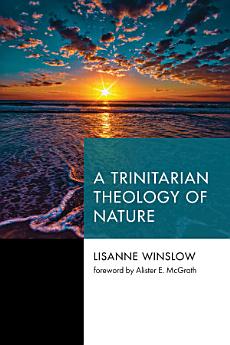A Trinitarian Theology of Nature
мар 2020. · Princeton Theological Monograph Series 244. књига · Wipf and Stock Publishers
E-knjiga
192
Stranica
family_home
Ispunjava uslove
info
reportOcene i recenzije nisu verifikovane Saznajte više
O ovoj e-knjizi
In its attempt to ascertain the mechanisms of nature, contemporary science seems to be generating unanswerable questions. One way forward might be by appealing to a theistic metaphysics of the fundamental workings in natural science. Moving beyond Barth’s objection to natural theology, this work arrives at some of Emil Brunner’s exegetical insights indicating that nature is divine communication. This communication and revelation is understood through natural types, or onto-types, building upon the insights of Jonathan Edwards. Edwards proposed messages in nature as a language of God intending to convey spiritual, biblical, and theological messages to the creature as part of God’s end in creating. Edwards’s insights are brought forth to determine the usefulness of his typological method all the way down to cellular and molecular mechanisms. Edwards also proposed that God’s acting in nature reflects the Trinitarian God of the Christian faith. Therefore, a Trinitarian theology of Nature composing a Theo-logy of Nature, a Christology of Nature, and a Pneumatology of Nature explores how each divine person of the Godhead acts in perichoretic unity in the world we encounter. God’s Trinitarian powerful and magnificent glory is not merely displayed by what has been made, but is also intimately shared in a gospel of nature.
O autoru
Lisanne Winslow is Professor of Biology and Chair of the Department of Biology and Biochemistry at the University of Northwestern, St Paul. She holds doctorates in both biology and theology, so she also teaches courses in the Department of Biblical and Theological Studies at the University of Northwestern, St. Paul. Winslow has authored or coauthored numerous articles in scientific journals. She is also an ordained minister in the National Association of Congregational Christian Churches.
Ocenite ovu e-knjigu
Javite nam svoje mišljenje.
Informacije o čitanju
Pametni telefoni i tableti
Instalirajte aplikaciju Google Play knjige za Android i iPad/iPhone. Automatski se sinhronizuje sa nalogom i omogućava vam da čitate onlajn i oflajn gde god da se nalazite.
Laptopovi i računari
Možete da slušate audio-knjige kupljene na Google Play-u pomoću veb-pregledača na računaru.
E-čitači i drugi uređaji
Da biste čitali na uređajima koje koriste e-mastilo, kao što su Kobo e-čitači, treba da preuzmete fajl i prenesete ga na uređaj. Pratite detaljna uputstva iz centra za pomoć da biste preneli fajlove u podržane e-čitače.










